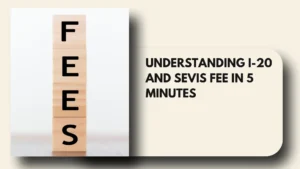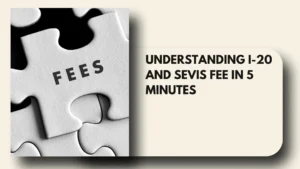- Indian students can open an Australian bank account online up to 3 months before arrival, making financial setup easier.
- Top Australian banks with zero foreign transfer fees include Commonwealth Bank of Australia, Westpac, ANZ, NAB Bank and more.
- International money transfers to Australia cost as low as 1.5-2% with Wise, compared to traditional bank charges of $15-30.

Opening a bank account in Australia is one of your first priorities as an international student. This process is straightforward and often complete before arrival. In this blog, we guide you through the best Australian banks for Indian students, including transfer fee, key features, and practical steps to set up your account with ease.In this guide, we break down both UK visa routes, compare costs, requirements, benefits, and help you determine which aligns with your career goals.
Why You Need an Australian Bank Account
A local bank account enables you to receive family funds, pay rent, manage expenses, and work part-time. Landlords require bank transfers for rent, and employers need an active account for salary deposits. Without one, your daily financial operations in Australia become unnecessarily complicated.
Understanding the 100-Point ID Verification System
Australian banks operate under a government-approved 100-point identification system designed to prevent fraud and verify your identity. This system works by assigning different points to various documents, and your submitted documents must total at least 100 points to meet verification requirements.
Mandatory Documents
These documents are non-negotiable for international students opening a bank account:
| Document Type | Points |
|---|---|
| Valid Passport | 70 |
| Student Visa | 40 |
| Confirmation of Enrolment (CoE) | 40 |
Total from Mandatory Documents: 150 points ✓ (Already exceeds 100-point requirement)
Additional Documents (Optional – For Verification)
While the mandatory documents above already meet the 100-point requirement, banks may request additional documents for address verification or further identity confirmation:
| Document Type | Points |
|---|---|
| Tax File Number (TFN) Notice | 20 |
| Utility Bills or Rental Agreement | 20 |
| Driver's Licence or State ID | 40 |
| Birth Certificate | 20 |
| Work Permit or Employment Contract | 20 |
Which Australian Banks Accept Indian Students?
Below are the top Australian banks that welcome Indian students with easy account setup and low-cost or zero international transfers.
Commonwealth Bank of Australia (CBA)
- Transfer Fee: $0 for online international transfers from AUD via NetBank/app; CBA covers correspondent bank fees
- Key Features: No monthly account fees for students under 30; 4,200+ ATMs; Account opening 14 days pre-arrival
Westpac Bank
- Transfer Fee: $0 for foreign currency transfers via app/online; $20 via online banking in AUD; no correspondent bank fees for 10+ currencies including INR
- Key Features: No address needed to open online; 3 months pre-arrival opening; No minimum balance
ANZ Bank
- Transfer Fee: $0 for foreign currency transfers online; $18 for AUD transfers online; $0 correspondent bank fees for INR transfers
- Key Features: Unlimited transactions; Correspondent bank fees covered for INR transfers; Strong mobile app
NAB Bank
- Transfer Fee: $0 for foreign currency transfers online; $30 for AUD transfers online; overseas bank charges covered in most cases
- Key Features: 7,000+ ATMs; No minimum balance; No monthly fees for students
HSBC Australia
- Transfer Fee: AUD $15-20 (₹870-1,000 approximately); lower than major banks
- Key Features: International student account; competitive exchange rates; priority support; Previous HSBC India banking advantage
ING Bank
- Transfer Fee: Free international transfers (with monthly deposit conditions); 3% international transaction fee on purchases
- Key Features: No monthly fees; $0 ATM fees worldwide; No deposit requirements; Competitive savings rates
Macquarie Bank
- Transfer Fee: Free international transfers (no bank processing fees)
- Key Features: No monthly fees; High-interest savings for students; Digital-first banking; No minimum balance
Wise Bank
- Transfer Fee: 1.5-2% of transfer amount; significantly cheaper than banks
- Key Features: Mid-market exchange rates; Best for regular transfers to India; Multi-currency accounts; 24/7 support
Types of Bank Accounts for Indian Students in Australia
As an international student, you’ll typically choose between two main types of accounts:
- Transaction Account (Everyday Account): Used for daily expenses, EFTPOS payments, and receiving wages.
- Savings Account: Designed to help students earn interest on their savings.
Most students start with a transaction account to handle daily expenses and later add a savings account to build their funds.
Step-by-Step Process to Open Your Australian Bank Account
Opening your Australian bank account as an international student involves simple online and in-person steps to verify your identity and activate access.
- Visit your chosen bank’s website and select the student account option.
- Fill out the online application form with personal details and course information.
- Upload scanned documents such as your passport, visa, and CoE.
- Verify your email and create secure login credentials.
- Wait 24–48 hours for approval and your provisional account number.
- After arriving in Australia, visit a local branch within two weeks.
- Bring original documents for in-person verification under the 100-point system.
- Sign confirmation forms and review account terms with the officer.
- Collect your debit card and set your personal PIN securely.
- Activate mobile banking and enable two-factor authentication for safe access.
How to Transfer Money from India to Australia
Many students rely on family support from India, and several safe methods are available to receive funds in Australia:
- Wire Transfers: Services like Western Union, Wise (formerly TransferWise), and MoneyGram allow quick international transfers.
- Bank-to-Bank Transfers: Use your Australian bank’s SWIFT code for direct overseas payments.
- Forex Cards: Preloaded travel cards offer transparent fees and competitive exchange rates.
Key Takeaways
For Indian students, setting up an Australian bank account early helps manage tuition, rent, and living expenses with ease. Top banks such as Commonwealth, Westpac, ANZ, NAB, and HSBC provide student-focused benefits including zero monthly fees, no minimum balance, and the option to create an account before arrival. The 100-point ID verification process ensures secure activation using documents like your passport, visa, and Confirmation of Enrolment (CoE).
Students typically begin with a transaction account for daily use and later open a savings account to build funds. With international transfer options like Wise, Western Union, and bank-to-bank SWIFT payments, moving money from India is straightforward and safe.
Begin your Australian education journey with AdmitX. Our services include:
- University Selection Guidance
- SOP Review
- Study-Abroad Document Templates
- Free IELTS Bootcamp Course
- Scholarship Assistance
- Visa Support Services
And much more!
Book your free study abroad counselling session with our experts today!
FAQs
Which bank account type is best for paying everyday expenses in Australia?
A transaction (everyday) account is ideal for daily payments and receiving wages.
When can I apply for a savings account as a student in Australia?
You can open a savings account any time after you have your main account and funds to deposit.
What is the maximum amount I can transfer from India to my Australian account each year?
The maximum amount you can transfer from India to Australia each financial year is USD $250,000.
If I don’t provide a TFN, what rate will my employer withhold tax at?
Your employer may withhold at the “no-TFN” rate until you supply or apply for a TFN.
Will I be taxed in Australia on money sent by my family from India?
No, you will generally not be taxed in Australia on money sent by your family from India.
Can I access my Australian bank account from India?
Yes, once your account is activated with internet/mobile banking enabled, you can access it internationally (subject to bank rules and foreign transaction fees).
How soon after arriving in Australia must I visit a bank branch with original documents?
It is wise to visit within your first 1–2 weeks of arrival to complete verification and collect your debit card.
What is the 100-point ID verification system used by Australian banks?
It’s a government-approved method where each ID document carries points. You must present documents totalling at least 100 points.
What happens if I move address or change enrolment status while studying?
You should inform both your bank (for account contact details) and your university/institution if your enrolment or visa status changes.
Are there limits or checks on large money transfers into Australia from overseas?
For transfers into Australia, agencies such as AUSTRAC may monitor transactions (especially AUD 10,000+ in cash or equivalent) for reporting — though no specific upper limit on transfers exists.
What happens to my UK visa status if I lose my job whilst on a Skilled Worker visa?
You have 14 days to find alternative employment with a new sponsor; failing to do so will result in visa cancellation and requirement to leave the UK.
If you are an aspirant looking to study at your dream university, book an appointment with AdmitX today and start your applications early to avail yourself of all the benefits.
















